Traditional Eccles Cakes
This post may contain affiliate links. See my disclosure policy.
One of Britain’s most famous and beloved pastries, these traditional Eccles cakes are delightfully flaky and packed with a mixture of sweet currants, candied citrus peel and spices. Get ready to experience one of the most delicious pastries you’ve ever tasted! A thoroughly authentic Eccles Cakes recipe.
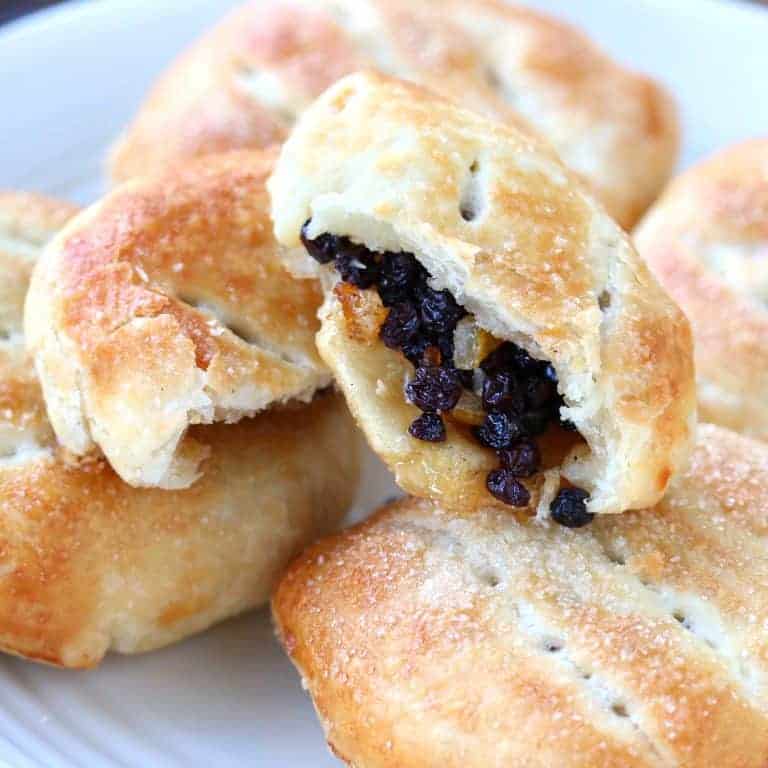
The Eccles Cake is practically a British institution. And one of its tastiest at that. And while sadly far too many of Britain’s other centuries-old recipes have been long lost and forgotten, the Eccles Cake, most fortunately, has continued on. These delicious pastries really take me back to the years I lived in England. Though at the time I had only had the store-bought versions, they nevertheless made a lasting impression. Now every time I enjoy one of these exquisite homemade Eccles cakes I’m immediately transported back to the country I call my second home.
What Are Eccles Cakes?
If you’ve never heard of them, Eccles Cakes are small, round cakes made from flaky pastry that is filled with dried currants, candied lemon, orange zest, sugar and spices that commonly include cinnamon, nutmeg, allspice and cloves. The cakes are topped with a sprinkling of sugar and then baked to flaky, golden perfection. They’re traditionally enjoyed with a cup of tea and accompanied by Lancashire cheese for a sweet-savory combination. Similar to Eccles cakes are two other traditional British pastries: Banbury cakes (oval-shaped) and Chorley cakes (flatter and using shortcrust pastry).
Where Did They Originate?
Eccles cakes date back to at least 17th century England. A popular pastry even then, they eventually fell under the stern and disapproving glare of the Puritans. Inappropriately indulgent, sinfully tempting to the human soul, and inciting revelry at community events known as Eccles Wakes, the Puritans banned both Eccles cakes and mince pies (also containing currants). As legend goes, Oliver Cromwell himself made a public example of the deviant pastries by instating an act of Parliament that threatened imprisonment for anyone found eating an Eccles cake.
Had he eaten them occasionally he probably would have been a far happier, and undoubtedly more congenial, man. As it was, he died just a few short years later from a urinary infection. (Serves you right, ye olde git, for taking away our Eccles cakes!)

Fortunately Cromwell’s Puritan reign of culinary terror ended and the Restoration saw the triumphant return of the Eccles cake. (Though they remain something of a societal menace with an increase in house fires attributed to them. A British newspaper reported that these fires are due to microwaving Eccles cakes too long – the sugar on the outside bursts into flames if overheated. So just be careful when you reheat them – we don’t want another ban placed on them!)
Eccles cakes are named for the town of Eccles in Lancashire, England, now classified as a town in the City of Salford, Greater Manchester.
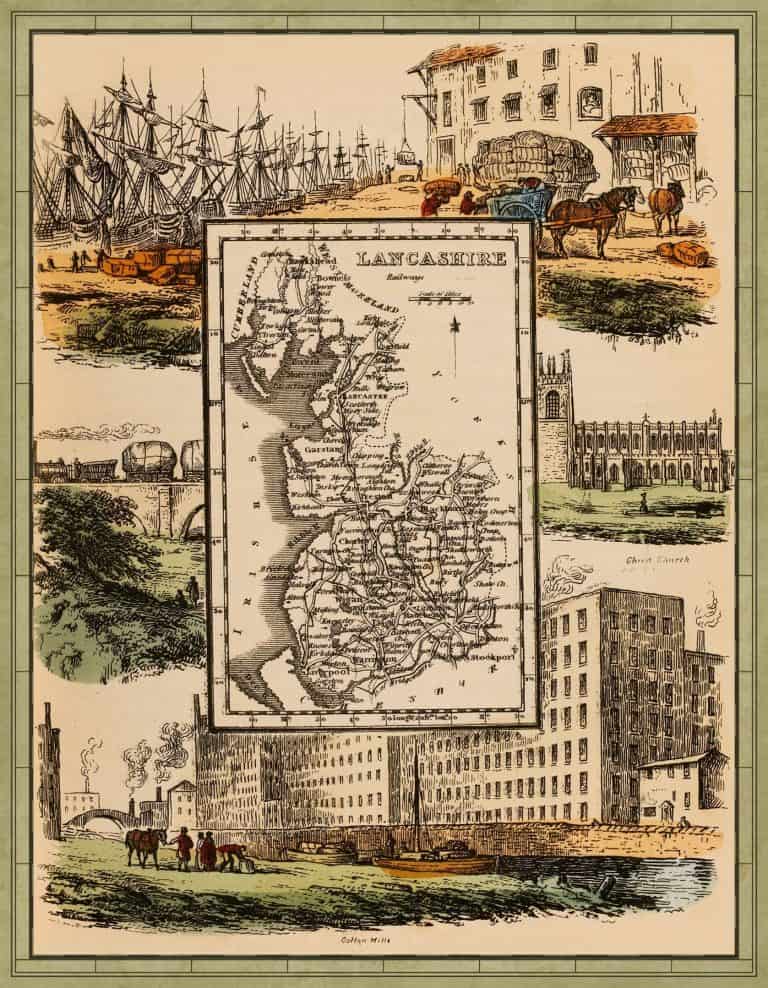
Though their origin long predates him, it was James Birch who became the first person to sell Eccles cakes commercially in 1793 in the Eccles town centre. Their popularity continued to grow and they were even being exported to the West Indies and to the United States as early as 1818.

Eccles cakes continue to be produced commercially and sold worldwide. The factory that makes Real Lancashire Eccles Cakes is located just 5 miles down the road from the pastry’s birthplace and, 75 years later, it’s the world’s largest producer of Eccles cakes.
These store-bought cakes are one of the few rare exceptions of pre-packaged, commercially sold pastries that actually taste pretty darn good. That’s because while they’re mass-produced, they’re largely handmade.
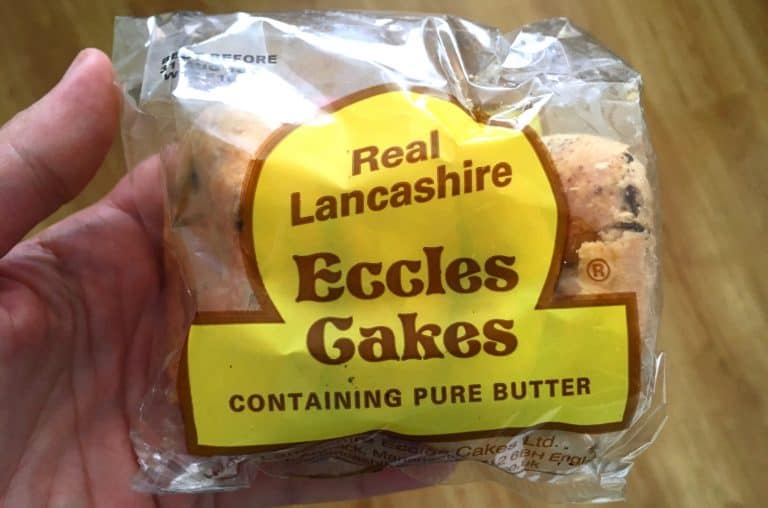
Homemade Eccles Cakes
But as enjoyable as these store-bought Real Lancashire Eccles cakes are, nothing – and I mean nothing – beats the flavor and texture of homemade Eccles cakes.
If you’ve tried but have never cared for Eccles cakes, you must try these homemade ones. You’ll likely change your mind. And if you’ve always loved Eccles cakes, after trying these I’m confident you’ll love them even more.
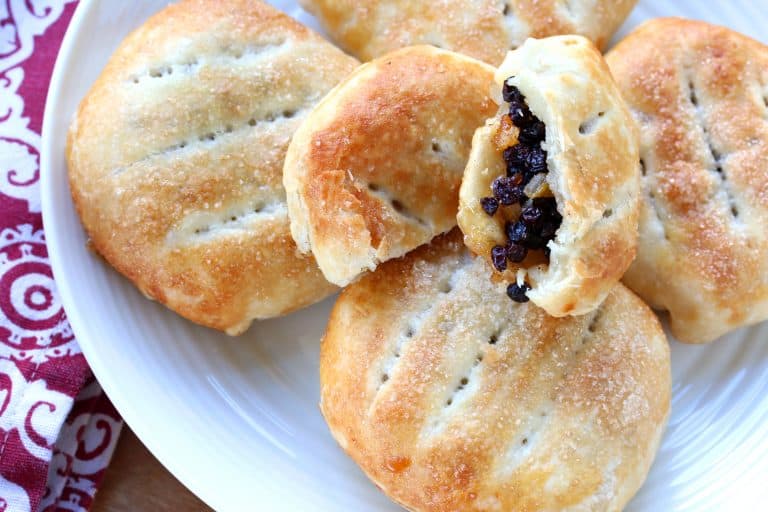
How to Make Eccles Cakes
The quality of the pastry is absolutely key. It’s not puff pastry, but it is flaky pastry. The texture is somewhere in between puff and shortcrust pastry. The dough of the Eccles cake is delightfully flaky, and if you want it especially delicate and flaky, substitute a little lard for some of the butter (see my tutorial on How to Make Lard).
The other key to a great Eccles cake is using a generous amount of filling. When you bite into an eccles cake you shouldn’t get a mouthful of dough. The ratio should be roughly 60% pastry and 40% filling. When you bite into an eccles cake you should simultaneously experience the gentle crackle of the flaky pastry along with the soft and sweet chewiness of the currants. Currants are also known as “zante raisins” which are much smaller than regular raisins. Regular raisins are extremely (too much so) sweet and squishy while zante raisins are a bit tangier, chewier and firmer and won’t become mushy-wet like raisins.
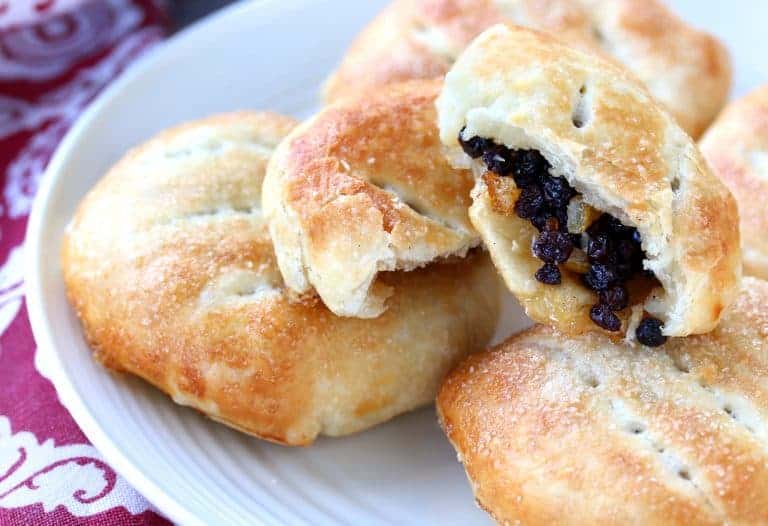
Eccles Cakes Recipe
Let’s get started!
NOTE: To save time both the pastry dough and the filling can be made days in advance and kept chilled.
Make the pastry dough:
To make the pastry dough: Place the flour, salt and cubed butter in a food processor (alternatively this can be done by hand) and pulse until the mixture resembles coarse breadcrumbs.
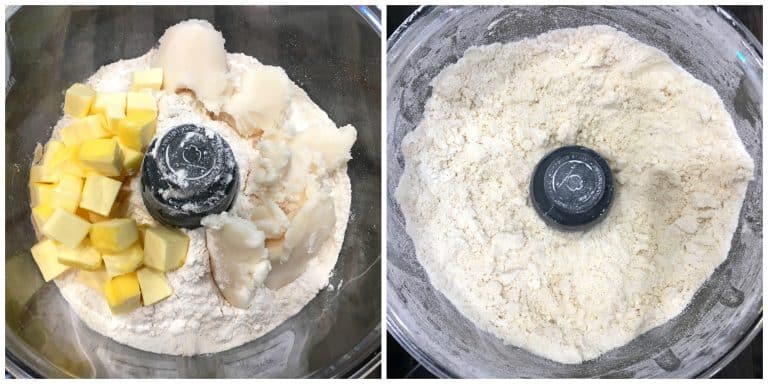
Gradually add the ice cold water and pulse just until the dough comes together (only add as much water as needed). Do not overdo this as maintaining the flecks of butter is critical to achieving a flaky pastry.
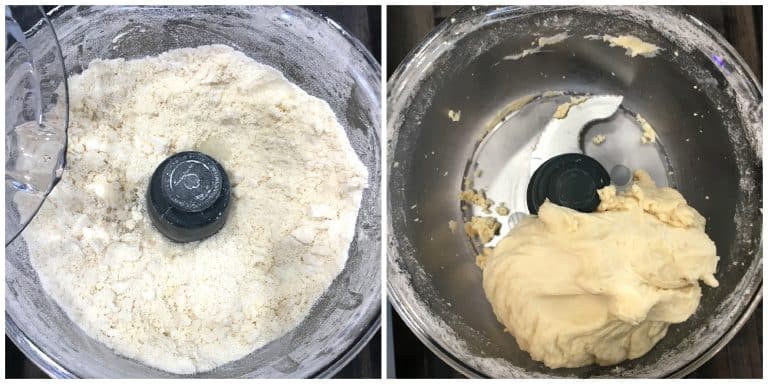
Turn the dough out onto a floured work surface and roll it out into a rectangle about 1/2 inch or so thick.
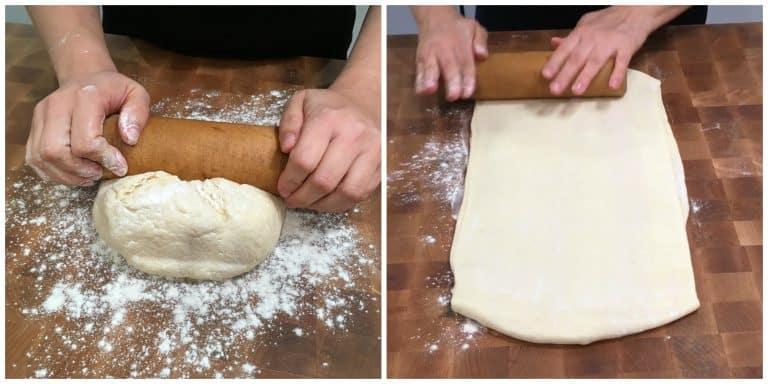
Fold each end of the dough into the middle with one end overlapping the other.
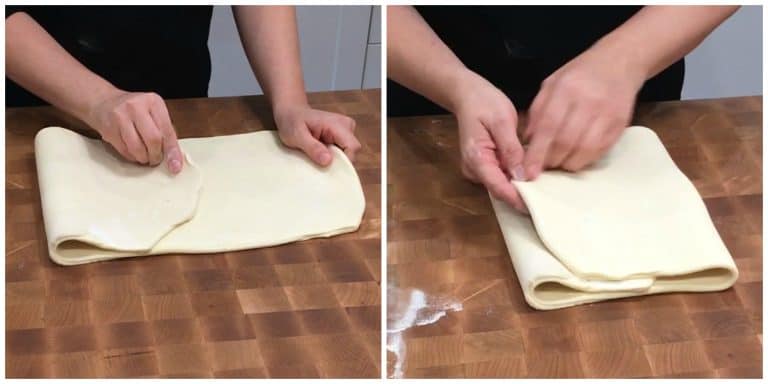
Rotate the dough 90 degrees and repeat all the steps. Wrap the dough in plastic wrap and chill for 20 minutes. Repeat the steps again, wrap the dough and chill for at least one hour before using. Can be made several days in advance.
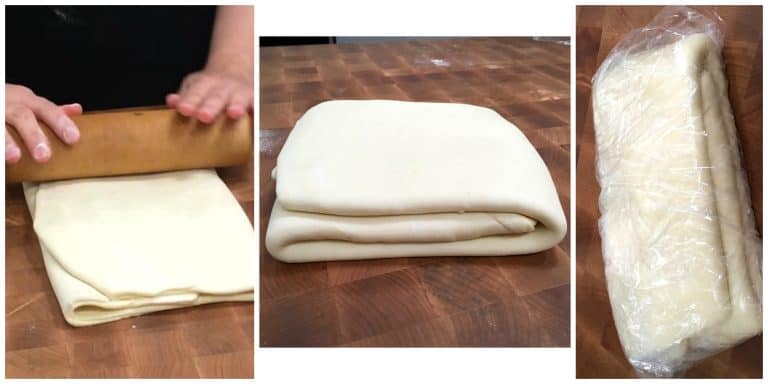
Make the Filling:
Melt the butter in a medium saucepan and add all remaining ingredients except for the egg white and demerara sugar. Turn off the heat and stir in the rum. Let the filling sit for at least 3-4 hours before using or overnight.
The filling can be made a few days in advance. If refrigerated, let the filling sit at room temp for at least 30 minutes before filling the Eccles cakes.
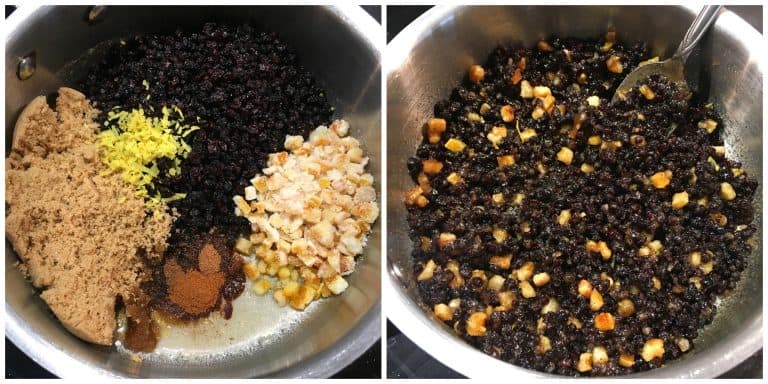
Assemble the Eccles Cakes:
I’m presenting two ways to cut out and fold the pastry: Round and square. Round is most commonly how it’s done but I personally prefer the square route. Even though some of the cakes may not turn out as perfectly round (because you’re having to tuck under the edges and shape the cakes round), I prefer square for two reasons: 1) You can fully customize the size (you’re not limited to the particular size of your round cutter) and 2) you use up all the dough this way, there’s no waste. Use whichever method you prefer.
Two Ways: Round or Square
Flour a work surface and roll the pastry out to between 1/8 and 1/4 inch thickness. Per your preference, either cut out rounds or squares. Typical size is about 3.5 inches across. This will yield about 10 Eccles cakes.
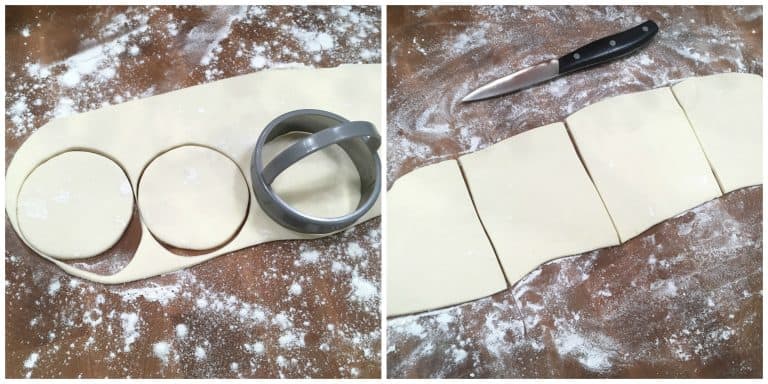
Two Ways: Round or Square
Place the dough cutouts on a lined baking sheet. Place as much filling on the cutouts as you can while leaving an adequate edge all around them to properly seal the pastries.

Two Ways: Round or Square
Lightly brush the edges with water.
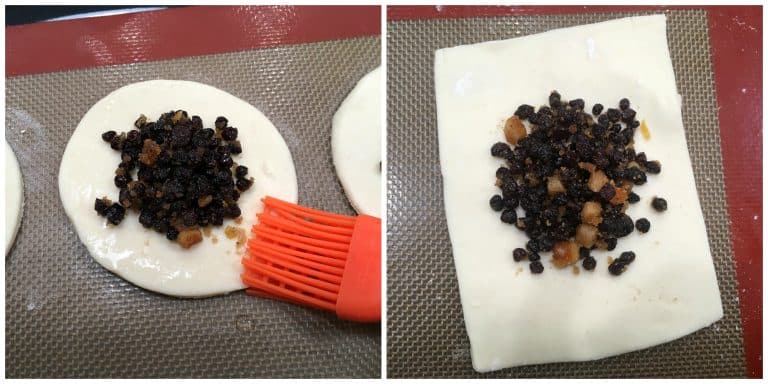
Going Round:
Gather up the edges towards the center, pressing them gently together to seal.
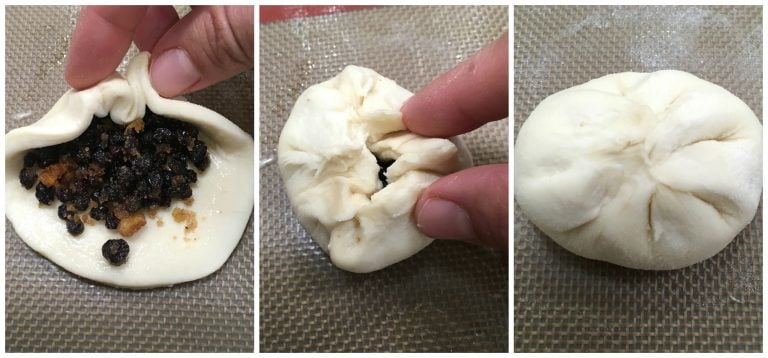
Going Square:
Fold each corner in towards the center and then gently press the edges to seal them. Bend the bend the corners in towards the center to create a round shape. Turn the pastry over with the sealed edges on the bottom and further shape it into a round.
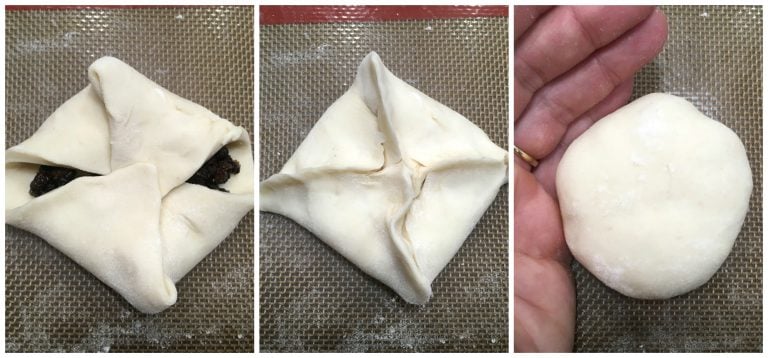
With the sealed edges on the bottom and the smooth surface on the top, gently press the cakes to slightly flatten them. Don’t press so hard that the currants break through the dough. Use a sharp knife to cut three parallel slits in the dough.
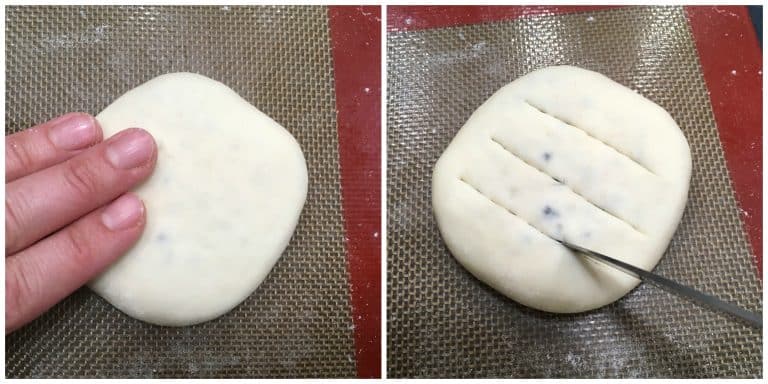
Brush with egg white and sprinkle with demerara sugar (can substitute cane sugar, or regular granulated sugar)
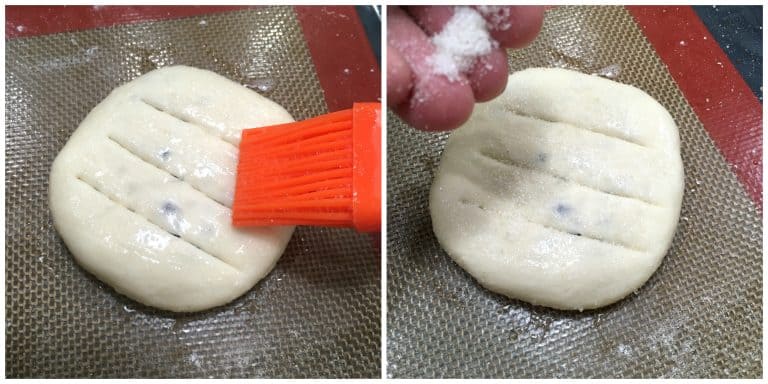
Bake the Eccles Cakes:
In an oven preheated to 375 degrees F, bake the Eccles cakes for 15-20 minutes or until golden brown. Transfer to a wire rack to cool until just warm.
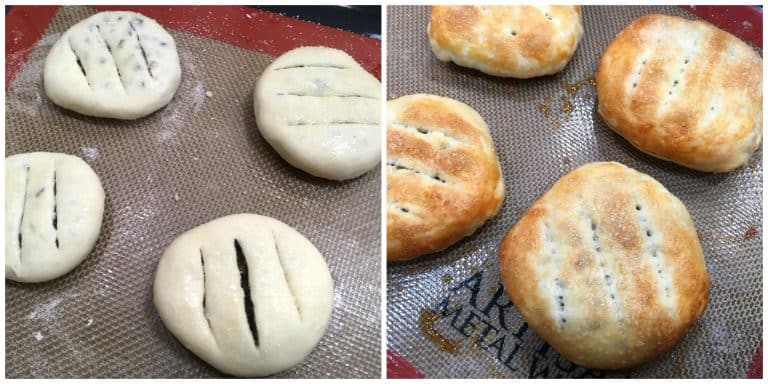
Eccles cakes are best eaten a little warm. You can reheat them in the microwave.
Traditionally enjoyed with a cup of tea and accompanied by an aged, crumbly cheese (e.g., Lancashire, English cheddar) for a sweet-savory combination.
Enjoy!

For more delicious British & Irish treats try my:
- Treacle Tart
- Spotted Dick
- Sticky Toffee Pudding
- Lardy Cake
- Hot Cross Buns
- Crumpets
- Welsh Cakes
- Chelsea Buns
- Parkin
- Scottish Shortbread
- Bara Brith
- Barmbrack
- Mincemeat
- Mince Pies
- Victoria Sponge Cake
Save This Recipe
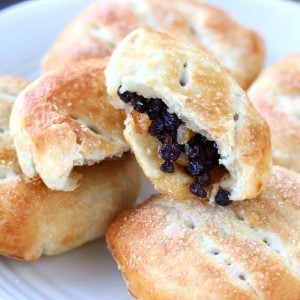
Traditional Eccles Cakes
Ingredients
- For the Pastry:
- 3 1/3 cups all-purpose flour
- 11 ounces (2 3/4 sticks) very cold butter, diced into cubes (put in the freezer for 5-10 minutes after cubing it to ensure it’s very cold)
- 1/2 teaspoon salt
- 125 ml ice cold water (add more if needed)
- How To Render Lard (click link for recipe) (for extra flaky pastries you can substitute a little lard in place of some of the butter)
- For the Filling:
- 6 tablespoons butter, unsalted
- 1 1/2 cups dried currants (also known as zante currants)
- 1/3 cup candied orange peel , very finely diced
- 1/3 cup candied lemon peel , very finely diced
- Homemade Candied Citrus Peel (click link for recipe) (We VERY STRONGLY recommend using homemade, it makes ALL the difference!)
- 3/4 cup brown sugar , loosely packed
- 1/2 teaspoon ground nutmeg
- 1/2 teaspoon ground cinnamon
- 1/4 teaspoon ground allspice
- 1/4 teaspoon salt
- 1 tablespoon dark rum (not extract)
- For Topping:
- 1 large egg white
- demerara sugar, for sprinkling (can substitute cane sugar)
Instructions
- To make the pastry dough: Place the flour, salt and cubed butter in a food processor (alternatively this can be done by hand) and pulse until the mixture resembles coarse breadcrumbs. Gradually add the ice cold water and pulse just until the dough comes together (only add as much water as needed). Do not overdo this as maintaining the flecks of butter is critical to achieving a flaky pastry.
- Turn the dough out onto a floured work surface and roll it out into a rectangle about 1/2 inch thick. Fold each end of the dough into the middle with one end overlapping the other. Rotate the dough 90 degrees. Repeat all the steps. Wrap the dough in plastic wrap and chill for 20 minutes. Repeat the steps again, wrap the dough and chill for at least one hour before using. The pastry dough can be made a few days in advance or frozen.
- To make the filling: Melt the butter in a medium saucepan and add all remaining ingredients except for the egg white and demerara sugar. Turn off the heat and stir in the rum. Let the filling sit for at least 3-4 hours before using or overnight. The filling can be made a few days in advance. If refrigerated, let the filling sit at room temp for at least 30 minutes before filling the Eccles cakes.
- To assemble the Eccles cakes: Flour a work surface and roll the pastry out to between 1/8 and 1/4 inch thickness. Per your preference, either cut out rounds or squares. Typical size is about 3.5 inches in diameter. *SEE BLOG POST PICTURES for instructions on making the square version of the cutouts (they’re more customizable and don’t waste any dough). Place the dough cutouts on a lined baking sheet. Place as much filling on the cutouts as you can while leaving an adequate edge all around them to properly seal the pastries.Lightly brush the edges with water.Gather up the edges towards the center, pressing them gently together to seal. Turn the cakes over with the sealed edges on the bottom.With the sealed edges on the bottom and the smooth surface on the top, gently press the cakes to slightly flatten them. Don’t press so hard that the currants break through the dough. Use a sharp knife to cut three parallel slits in the dough.Brush with egg white and sprinkle with demerara sugar (can substitute cane sugar)
- Preheat the oven to 375 degrees F. Bake the Eccles cakes for 15-20 minutes or until golden brown. Transfer to a wire rack to cool until just warm.Eccles cakes are best eaten a little warm. You can reheat them in the microwave.Traditionally enjoyed with a cup of tea and accompanied by an aged, crumbly cheese (e.g., Lancashire, English cheddar) for a sweet-savory combination.
Notes
Nutrition
Originally published on The Daring Gourmet December 8, 2018
Eccles Town Hall image courtesy D.A. Howcroft via CC 3.0 licensing, image altered from original



















Perfect recipe, method, and results. Home-candied citrus rind TRULY IS the key.
Notes:
1. I soaked currants in hot tea for 1 hour, then gently patted dry with paper towels.
2. I divided and rolled dough into a rectangle, approx 4” x 12” and put it through the pasta roller at widest setting, then second widest. Trimmed to 4” squares and produced 4 doz. delicious Eccles cakes. They are the hit of this Christmas season.
Thank you for perfection.
These were terrific when I made them last year. However, I remain a little confused about the quantity of butter…11 ounces is about 312 grams (recipe says 275g). Which quantity should I use – 11 ounces or 275 grams? Thanks!
I’m so glad you enjoyed them, Mel, thank you! Sorry about the glitch – it’s 11 ounces, 312 grams.
Hi Kimberly! I just tried Eccles cakes for the first time last Christmas and I LOVED them. I want to try making these, they look great. Can these be frozen? If so, would it be best to freeze before or after baking? Also, I made your rouladen recipe last week, delicious!
Hi Kitten, yes they can be frozen and I recommend freezing them before baking. Place them on a baking sheet and place the tray in the freezer. Once frozen you can place them in a freezer bag or container. No need to thaw them first before baking, just pop them in the oven and allow for a longer baking time – just keep an eye on them. I’m so glad you enjoyed the Rouladen, thank you! :)
These were absolutely perfect and one of the most delicious pastries I’ve ever had. I sought out this recipe because I’ve been reading the Maisie Dobbs series, and she always enjoyed Eccles cakes–I’ve been dying to know what they taste like! Now I know and I will make these again and again. Thanks for the wonderful recipe!
That’s wonderful, Ashley, I’m so thrilled to hear that, thank you!
Kim, would using fresh currants from our garden make the pastry too soggy? We have both black and red currant perfectly ripened at the moment, and I was wondering whether I should dehydrate them a bit for this recipe, or use them as is? Thanks in advance for the advice!
Hi Sia, the dried black currants used in British recipes aren’t actually currants at all, they refer to a smaller raisin known as “zante currants” or “zante raisins.” And yes, they definitely need to be fully dehydrated.
I had bunches of organic citrus given to me for Christmas and used the rinds for this recipe. Oh my gosh! I feel so proud that my Eccles cakes came out looking just like the photo. The instructions are on point. I did use some grapefruit candied peel though. Kimberly, I enjoy your adventurous spirit. I will be following you. Thank you.
That’s wonderful, Mary, thanks so much for the feedback! Nothing beats homemade candied citrus peels, they make baked goods like these Eccles cakes really come to life. The addition of the candied grapefruit peels sounds fabulous, too. Thanks again, Mary, and thanks also for following! :)
Eccles cake — ah — my English mother was the finest pastry cook — and, when she emigrated to American in 1928 as a young bride in her 20s, her recipe for Eccles cake simply used orange marmalade. She laid it out in a cookie sheet, and when cooked cut in it squares and served. A professional baker would not do this only because Eccles cakes baked thus would not package and transport well. But at home, slipped onto a platter and taken to the At Home guests at New Year, none spilled.
I make Eccles Cake now, using her old recipe.
Hi, Looking for a recipe for Spanish Bars. Not the cake but a harder type, rectangle pastry. Mother use to get them from Dominion when we were kids. Thanks Linda
I adore Eccles cakes! MHz British husband introduced them to me, and I binge eat these little lovelies :) One question, do I substitute my homemade citrus peel for the 2/3 cups of lemon and orange peel, or is it a separate ingredient?
I am lucky to live in Canada, currants are plentiful!
Hi Sheepie, correct, you use 2/3 cup of your homemade candied citrus. Yes, I’ve had to bring currants back with me to Washington from Victoria. And we were in England a few weeks ago and I brought 12 pounds of them back with me and stuck them in the freezer! :)
Can mincemeat be used for the filling?
Hi Pat, yes it can but it won’t be eccles cakes, more like mincemeat hand pies.
My daughter really loved it! Tastes really good!
Thanks so much, Toni, I’m so glad they were a hit!
So interesting to read the history of these cakes! I love a flaky delicious pastry. Can’t wait to try this recipe out!
I love trying new things! Thanks for the tip about cutting them into squares, love not wasting anything!
These look to die for. I want a dozen right now!
Wow! These look amazing! I love how you told their history, so interesting. And that dough – incredible! The British Baking Show would be so impressed!